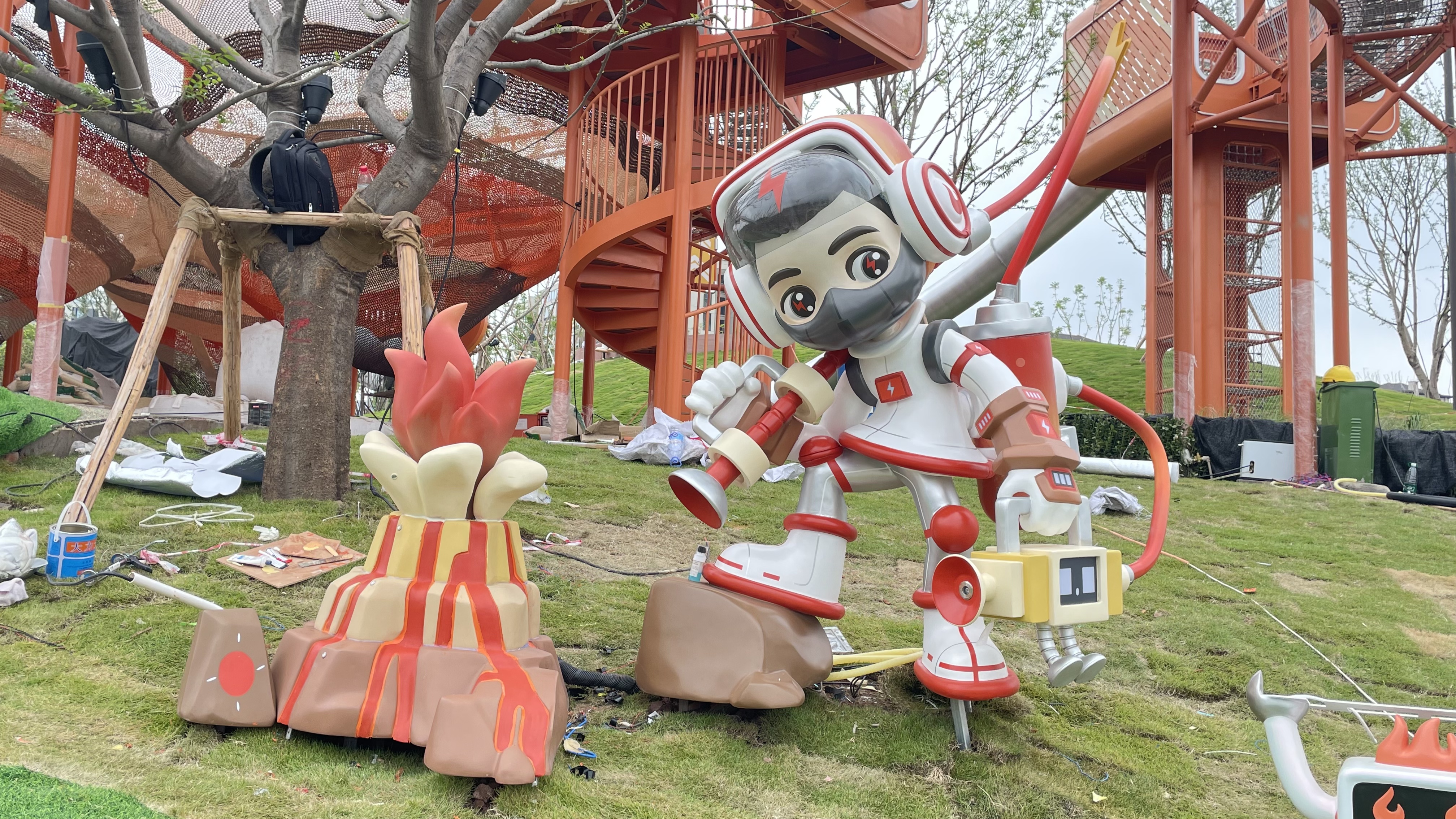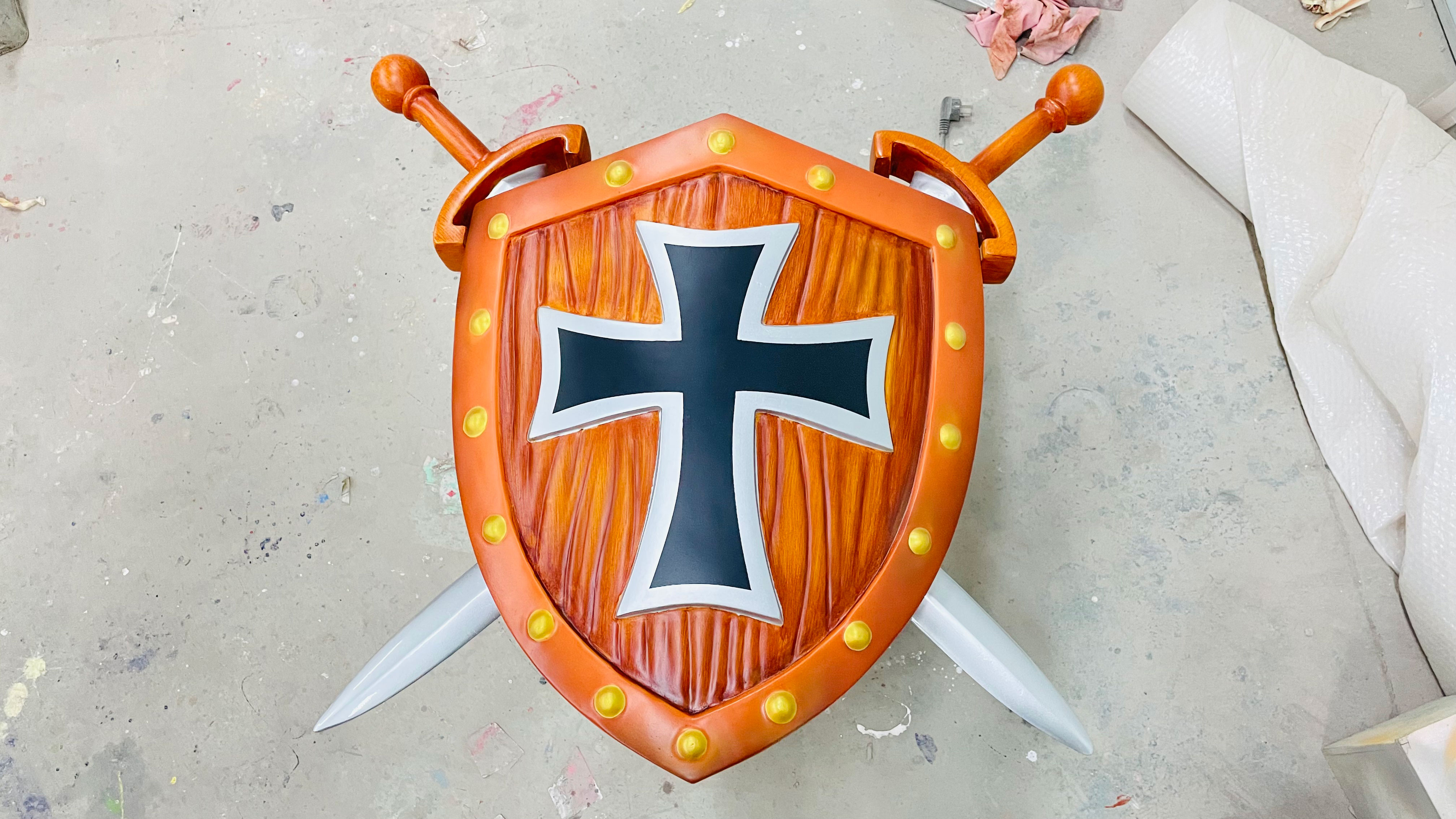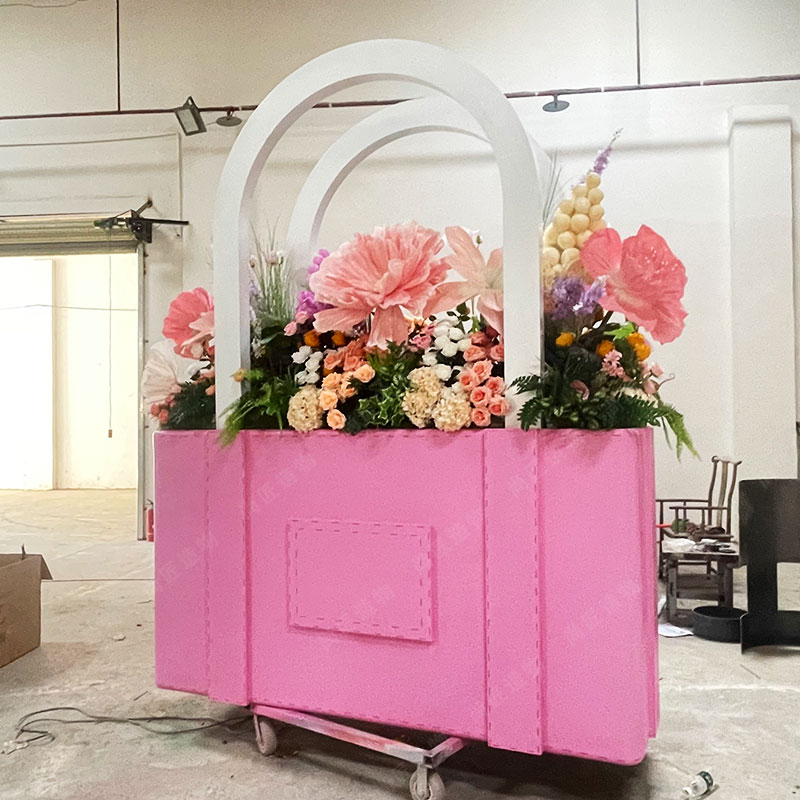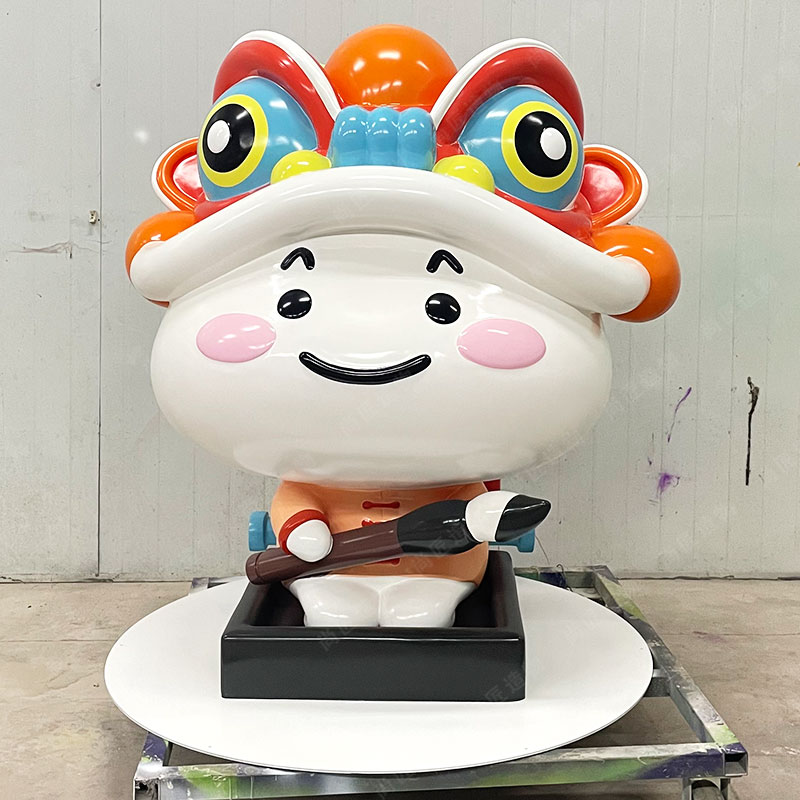Key Takeaways
Kinetic metal sculptures bridge artistic expression and mechanical precision, relying on engineered components like electromagnets to achieve controlled motion. These works respond to environmental forces—wind, temperature shifts, or human interaction—creating ever-changing visual narratives. Stainless steel and aluminum dominate material choices due to their durability and adaptability to dynamic stress.
"A kinetic sculptor must think like both a poet and an engineer—every pivot point carries meaning, every gear ratio shapes rhythm." — Miriam Feldspar, industrial artist.
When designing motion-driven installations, prioritize balanced weight distribution to minimize wear on moving parts. For instance, techniques used in fiberglass sculpture frameworks, such as reinforced joint systems, can inspire solutions for metal-based kinetic works. Regular maintenance, including lubrication and electromagnet calibration, ensures longevity in outdoor settings where environmental factors accelerate degradation.

Kinetic Metal Sculpture Mechanics
The mechanics of kinetic metal sculptures rely on precise engineering to achieve fluid motion while maintaining structural integrity. These artworks integrate principles like torque, equilibrium, and material fatigue resistance, balancing aesthetic forms with functional mechanics. Common motion mechanisms include electromagnetic actuators, mechanical linkages, and gravity-driven pendulums, each requiring tailored calibration to synchronize movement with artistic intent. For example, electromagnetic systems use controlled current fluctuations to create rhythmic interactions between metal components, as seen in IP character sculpture installations.
| Mechanism Type | Key Features | Common Applications |
|---|---|---|
| Electromagnetic Actuators | Programmable polarity shifts, silent operation | Wall-mounted dynamic pieces |
| Mechanical Linkages | Gear-driven motion, modular assembly | Free-standing rotational works |
| Gravity-Driven Systems | Weight distribution, pendulum physics | Suspended kinetic installations |
Material selection further influences mechanical behavior—stainless steel offers durability for high-stress joints, while aluminum alloys enable lightweight, responsive motion. Engineers often collaborate with artists to optimize pivot points and bearing surfaces, ensuring seamless transitions between static and dynamic states. This interplay between rigidity and fluidity allows sculptures to respond subtly to environmental factors like wind or vibrations, bridging artistic vision with mechanical precision.
Electromagnet-Driven Art Dynamics
Electromagnets have revolutionized kinetic sculpture by introducing precise, programmable motion to metal artworks. Unlike traditional mechanical systems reliant on gears or weights, electromagnetic actuators enable artists to manipulate metal components through controlled magnetic fields. This technology allows sculptures to shift, rotate, or oscillate in response to timed electrical pulses, creating rhythmic patterns that blur the line between art and engineering.
A key application involves pairing stainless steel sculpture elements with embedded coils, where current variations alter magnetic forces to produce seamless movement. For instance, suspended steel plates might appear to "float" as opposing electromagnetic charges counteract gravity. Such systems often integrate sensors to adjust dynamics based on environmental factors like ambient light or temperature, adding layers of interactivity.
While electromagnets offer unprecedented control, their integration demands careful calibration. Artists collaborate with engineers to balance aesthetic intent with technical constraints, ensuring motion remains fluid without compromising structural integrity. This synergy highlights how modern kinetic art bridges creative vision with principles of physics, paving the way for sculptures that evolve in real time.
Modern Motion in Metal Artworks
Contemporary metal artists are redefining static forms by integrating principles of kinetic design, transforming rigid materials into fluid expressions of movement. Through precision engineering, sculptures now incorporate balanced pivots, rotating segments, and suspended components that respond to external stimuli like airflow or human interaction. This fusion of metallurgy and mechanics challenges traditional perceptions of weight and permanence, as stainless steel and aluminum alloys—materials once synonymous with immobility—become mediums for graceful, calculated motion.
A notable advancement lies in the use of lightweight alloys paired with counterweight systems, enabling large-scale installations to sway rhythmically without compromising structural integrity. These works often engage viewers through tactile or visual triggers, such as touch-activated rotations or shadow patterns that evolve with daylight shifts. While some pieces rely on passive environmental forces, others employ concealed mechanical systems to choreograph repetitive motions, blurring the line between organic and programmed movement.
This evolving discipline intersects with architectural design, as seen in kinetic facades that adapt to weather conditions, and public art installations that transform urban spaces into interactive environments. The interplay between Realistic sculpture traditions and kinetic experimentation continues to push boundaries, demonstrating how engineered motion can amplify metal’s inherent strengths while introducing new dimensions of temporal expression.
Environmental Force Interactions
Kinetic metal sculptures transcend static forms by harnessing environmental forces as integral components of their motion. Wind currents, temperature fluctuations, and even gravitational shifts activate engineered components, creating a dialogue between art and its surroundings. For instance, aerodynamically balanced elements respond to breezes, rotating or oscillating in patterns calibrated to airspeed and direction. Thermal expansion in metal alloys—triggered by sunlight or ambient heat—subtly alters structural tensions, producing incremental shifts in equilibrium. Such interactions blur the line between intentional design and organic adaptation, as sculptures evolve dynamically with weather cycles.
Water, too, plays a role in site-specific installations. Rainwater channels through sculptural grooves, redirecting kinetic energy to pivot suspended elements, while humidity fluctuations influence electromagnetic conductivity in hybrid systems. Engineers often integrate corrosion-resistant alloys to mitigate environmental wear, ensuring longevity without compromising responsiveness. This interplay extends to urban settings, where airflow patterns around buildings interact with public installations, creating site-unique motion signatures. Unlike static Cartoon sculpture, which prioritizes fixed aesthetics, kinetic works embrace unpredictability, transforming environmental variables into choreographed visual narratives. By embedding sensitivity to natural forces, artists amplify the viewer’s awareness of ecological systems shaping both art and space.
Innovative Electromagnetic Sculptures
Modern artists are increasingly turning to electromagnetism to redefine kinetic sculpture, blending precise engineering with aesthetic experimentation. By embedding controlled electromagnetic fields within metal frameworks, these works achieve fluid, unpredictable motions that challenge traditional static forms. For instance, sculptors often program alternating currents to manipulate suspended steel elements, creating rhythmic patterns that respond to real-time environmental inputs like ambient light or temperature shifts. This fusion of art and science not only highlights the relationship between energy and material but also invites viewers to observe how invisible forces shape physical reality.
A key advancement lies in kinetic sculpture systems that incorporate feedback loops, enabling sculptures to "adapt" their movements based on external stimuli. Such installations might use sensors to detect airflow or human proximity, triggering adjustments in electromagnetic intensity—a dynamic dialogue between artwork and surroundings. While early iterations focused on mechanical clockwork or wind-driven motion, today’s electromagnetic approaches offer finer control, allowing artists to choreograph metallic components with near-musical precision. As these innovations evolve, they continue to bridge gaps between industrial design, physics, and contemporary visual expression.

Metal Art and Mechanical Engineering
The fusion of metal art and mechanical engineering relies on precise calculations and material science to transform static forms into dynamic expressions. Engineers collaborate with artists to balance aesthetic vision with functional mechanics, selecting metals like stainless steel or aluminum for their durability and malleability. Components such as bearings, hinges, and pivots are integrated to enable smooth motion, while electromagnetic systems or weighted counterbalances often drive movement without compromising structural integrity.
Environmental factors—such as wind resistance or temperature fluctuations—are analyzed during design phases to ensure sculptures respond predictably to external forces. Computational modeling tools simulate stress points and motion trajectories, refining designs before fabrication. This synergy between disciplines allows kinetic sculptures to maintain equilibrium between artistic intent and engineering pragmatism, creating works that harmonize with their surroundings through controlled, rhythmic motion.
Dynamic Sculpture Design Principles
Designing kinetic metal sculptures requires balancing artistic vision with precise engineering. At its core, the process involves calculating forces like tension, torque, and equilibrium to ensure smooth, controlled motion. Artists often use lightweight metals such as aluminum or titanium for rotating components, paired with sturdier stainless steel frames to support structural integrity. Key mechanisms—such as pivots, bearings, or counterweights—are strategically placed to minimize friction while amplifying rhythmic patterns.
Environmental factors further shape design choices. Wind resistance, temperature changes, and humidity levels influence material durability and motion range. For instance, outdoor installations might incorporate weather-resistant alloys and adjustable joints to adapt to shifting conditions. Electromagnetic elements add complexity, demanding careful calibration of current flow and magnetic field strength to achieve predictable interactions between moving parts.
Aesthetic cohesion remains critical. Curved forms or angular geometries are engineered to harmonize with kinetic behavior, creating visual continuity whether the sculpture is static or in motion. This interplay between mechanics and artistry ensures each piece responds dynamically to its surroundings while maintaining structural reliability. Transitioning to fabrication, these principles guide welds, assembly sequences, and safety protocols, bridging creative concepts with functional execution.

Kinetic Innovations in Modern Metal
Recent advancements in kinetic metal sculpture stem from interdisciplinary collaborations between artists and engineers, blending mechanical precision with aesthetic vision. Central to these developments is the integration of electromagnet systems, which enable controlled, rhythmic movements in metal structures without visible mechanical components. For instance, lightweight aluminum alloys and stainless steel are now paired with programmable electromagnetic fields, allowing sculptures to shift forms in response to timed impulses or sensor-triggered inputs.
This synergy of materials science and motion design has expanded possibilities for site-specific installations. Wind patterns, pedestrian movement, or ambient temperature variations can activate sculptures, creating dynamic dialogues between art and its surroundings. Notably, modular hinge mechanisms—often laser-cut for accuracy—permit complex rotations while maintaining structural integrity. Such innovations not only challenge traditional notions of static metal art but also demonstrate how kinetic principles can transform industrial materials into evolving visual narratives.

Conclusion
The integration of kinetic principles into modern metal art sculptures underscores a transformative shift in how artists engage with both form and function. By merging electromagnet-driven mechanics with environmental forces like wind or light, these works transcend static aesthetics to embody dynamic dialogues between art and its surroundings. This interplay not only highlights the technical precision required in balancing weight, balance, and motion but also emphasizes the role of mechanical engineering in elevating artistic vision. As innovations in electromagnetic systems and material science advance, the boundaries of kinetic sculpture continue to expand, offering new possibilities for interactive public installations and gallery pieces. Ultimately, these creations reveal how motion can amplify emotional resonance, inviting viewers to witness the hidden rhythms within metal itself.

FAQs
How do kinetic sculptures incorporate motion into metal artworks?
Kinetic sculptures use mechanical systems like rotating joints or electromagnetic actuators to create movement. These elements respond to environmental factors such as wind or manual interaction, blending art with principles of physics and engineering.
What materials are commonly used in modern kinetic metal art?
Stainless steel, aluminum, and bronze are favored for their durability and malleability. These metals withstand repetitive motion while maintaining structural integrity, allowing artists to experiment with dynamic forms.
Can environmental forces like wind affect electromagnetic-driven sculptures?
Yes. While electromagnets provide controlled motion, external forces like wind may interact with the sculpture’s balance. Artists often design compensatory mechanisms to harmonize engineered movement with unpredictable natural influences.
How does kinetic sculpture design differ from traditional static metal art?
Kinetic works prioritize motion pathways and weight distribution, requiring collaboration between artists and engineers. Static art focuses on form alone, whereas kinetic pieces demand functional precision to ensure seamless, sustained movement.
Are kinetic sculptures high-maintenance compared to stationary pieces?
Moving parts necessitate periodic lubrication and alignment checks. However, advancements in corrosion-resistant metals and modular components have reduced long-term upkeep challenges.
What role does mechanical engineering play in kinetic art creation?
Engineers analyze torque, friction, and material stress to translate artistic concepts into operational designs. This collaboration ensures motion patterns align with aesthetic intent while avoiding mechanical failure.
 ch
ch English
English





